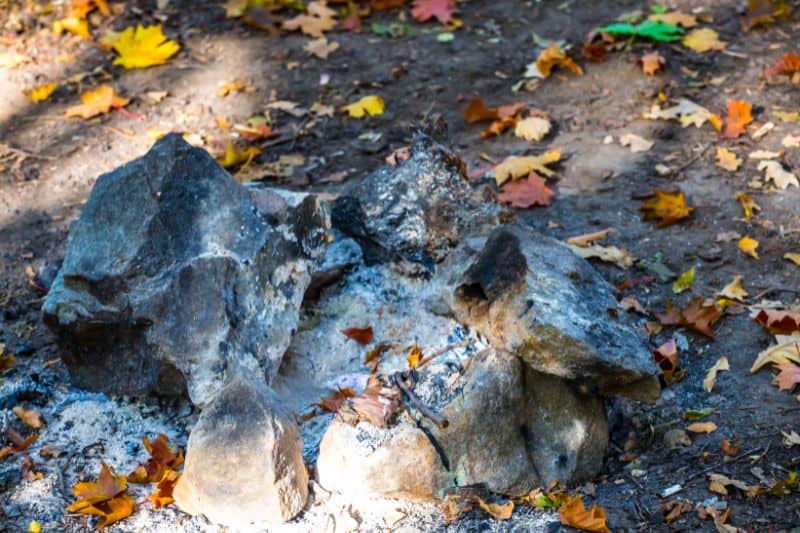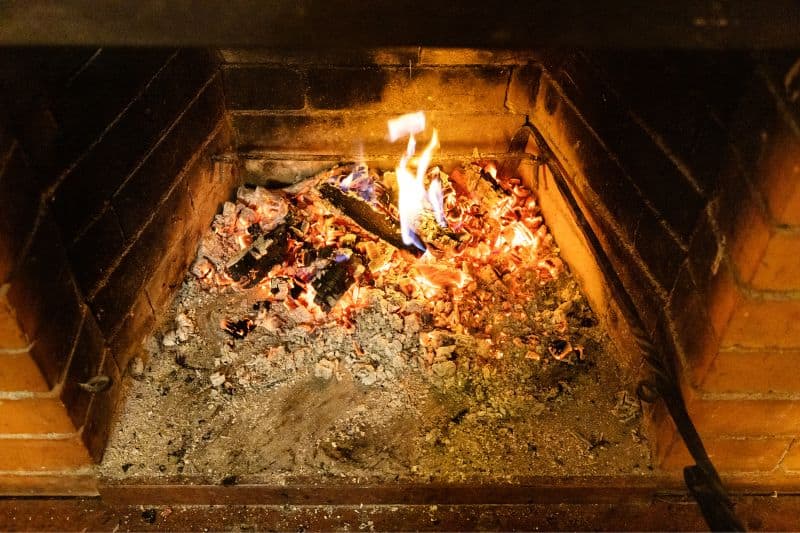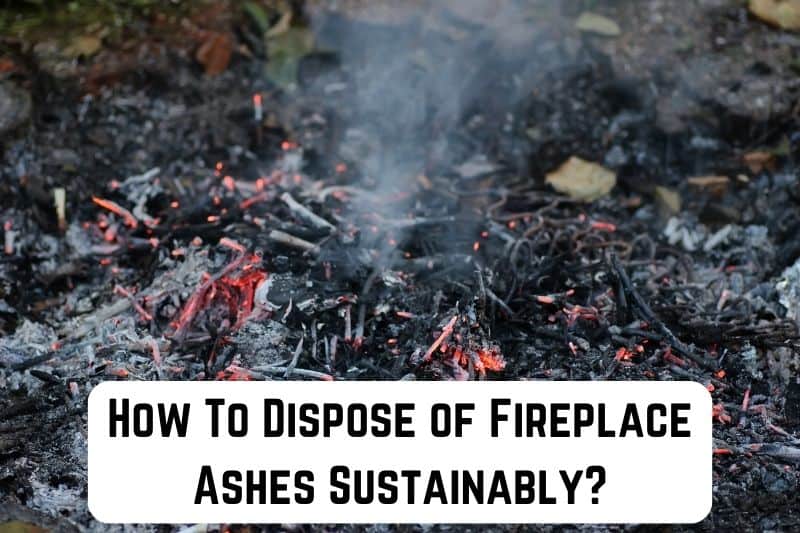When winter rolls around, and the temperatures drop below tolerable levels, nothing comes in handy as convening near the fireplace.
But have you ever paid attention to what you do with the wood ash from the fireplace?
Properly disposing of wood ash is essential, as it prevents respiratory issues and keeps the air quality at par.
But what’s the correct way to dispose of wood ash?
Well, in this article, we will answer that question in detail. We’ll even suggest some of the clever ways you can make use of wood ash, so you don’t have to even think about disposing of it in the first place.
Understanding Fireplace Ash Disposal
Before we dive into the nitty-gritty of today’s article, let’s begin by understanding what we’re dealing with.
Wood ash is the remnant of burned wood, composed of calcium carbonate and other elements.
Now, while the mother product, or wood, itself is environmentally friendly, the same can’t exactly be said of wood ash.
Left unattended to or improperly disposed of, wood ash can cause havoc not just to the environment but to its inhabitants as well, causing severe respiratory issues.
As such, it’s highly advisable after the cozy fireside moments that you take the time to dispose of wood ash carefully or at least utilize it in a way that keeps it from becoming a health and environmental hazard.
3 Proper Fireplace Ash Disposal Methods
Usually, disposing of wood ash from your fireplace entails placing it in a container or a sealed bag and tossing it into your trash bin. It gets hauled alongside other household waste and will be safely taken to a landfill, where chances of posing any health risk are very minimal if any at all.
But what if you don’t want to go the conventional way? What options do you have for wood ash disposal?
Well, here are some creative ways that you can make use of wood ash instead of just discarding it.
1. Fertilize Your Garden
Have you been looking for a natural way to fertilize your garden? Well, the by-product of your cozy fire could be all you need!
That’s right!
You see, wood ash boasts a handful of minerals like potassium, calcium, and phosphorus — all essential for plant growth.
Potassium, for instance, helps plants develop strong stems and roots, while calcium encourages the growth of healthy leaves. Phosphorus, on the other hand, is essential in photosynthesis, nutrient transfer within the plant, and other vital functions. In other words, every mineral in wood ash has a crucial role in plant life.
So, instead of tossing your wood ash in the trash bin, consider mixing it into your compost pile or sprinkling it directly onto your garden soil. It’ll enrich the soil and provide essential nutrients to promote healthier plant growth.
But then, as you do so, don’t be overambitious. Wood ash is alkaline in nature. As such, you’ll want to use it sparingly in your garden, as too much of it can raise the soil’s pH levels to exceedingly great levels than your plants can tolerate.
In fact, if possible, opt to use it in the compost pile rather than applying it directly to the soil. This will allow the ash to break down and neutralize before coming into contact with your plants’ roots.
In the compost pile, again apply it sparingly after every 6 inches of compost as you build the pile. The enriched soil will then feed your plants over time.
2. Pest Control
Have you been battling with critters invading your home? Are you concerned that your space has become a favorite spot for a variety of pests?
Wood ash is a powerful weapon that can help give you victory over pest intruders without having to use harmful chemicals.
Wood ash is naturally pest-repellent, making it one of the effective organic pest control methods. Once applied, this element works by drawing moisture from the pest, a process called desiccation, leading to the death of the pest.
In other words, whether you’re battling with snails and slugs, ticks, cutworms, or just about any other pest, the appropriate use of wood ash around your home can help keep them at bay.
Sprinkle a ring of wood ash around your garden bed or plants to deter snails and slugs from getting to your plants. Or if you have a tick problem in your yard, spreading some ash around the edges of your lawn will repel them.
The best part is that using wood ash for pest control is eco-friendly and harmless to your pets.
In fact, if your pets seem to have a flea or lice problem and are unsure of what product formula can work the magic, wood ash does the trick. Just rub a small amount of it on their fur to help repel the pests.
Plus, it’s a cost-effective solution compared to buying chemical pesticides. So next time you’re dealing with unwanted pests, consider adding some wood ash to your arsenal. Your plants and wallet will thank you!
3. Cleaning Agent
Did you know that wood ash can be your next cleaning companion? That’s right! As already put forth, wood ash is highly alkaline, just like soaps, making it an effective cleaning agent.
You can use it to scrub your pots and pans, clean your grill grate, or even remove grease stains from concrete surfaces. Just mix some ash with water to make a lye paste.
Usually, for every cup of wood ash, use two and a half cups of water to create the lye. Then, leave it for up to 24 hours before removing the particles. The leftover liquid is pure lye, which you can use for cleaning purposes.
For the best result, just apply the pure lye on the stains using an old toothbrush and leave it to sit for about 15 minutes. Then, rinse it off with warm water, and voila! Say goodbye to those stubborn stains.
But that’s not all; you can also use wood ash to clean glass and windows! Just mix it with water to create a spray and use it to clean your windows for a streak-free shine.

Environmental Considerations of Fireplace Ash
Now, while wood ash can be repurposed in several ways, one thing worth noting is that improper disposal or repurposing can have negative impacts on the environment.
Wood ash particles are really tiny and light, and this means they can easily be blown by the wind and remain airborne for long periods, causing air pollution and, thus, a dangerous threat when inhaled.
According to Science Direct, wood ash may, depending on the tree it’s coming from and the soil in which the tree grew, contain harmful components that can remain suspended in the air when the wood ash is carelessly dumped.
The problem is that these harmful components may leach into the soil or water sources and bioaccumulate as they move up on the food chain, posing a threat to both human and animal health.
Therefore, it’s important to dispose of wood ash properly, such as using it in specific areas of your garden or farm, rather than scattering it around haphazardly. It’s also essential to be mindful of the type and quantity of wood ash being used for repurposing purposes.
But still, better yet, it is recycling wood ash! As already established, you can use it in your garden as fertilizer, add it to compost, or make it your go-to cleaner for removing stains and cleaning glass and metal surfaces.
And, of course, as you interact with wood ash, remember to use gloves. That’s because lye, a product formed when wood ash mixes with water, is highly alkaline in nature, meaning that it can cause some skin irritations when handled with bare hands.

Alternatives to Fireplace Ashes Disposal
By now, you already have several ways of disposing of wood ash. But the question remains – are there any other alternatives to disposal?
The answer is yes! There are several alternatives for reusing and recycling wood ash, some of which you may not have thought about yet.
- Deicer: Have you ever struggled with slippery sidewalks and driveways during winter? Wood ash can be a real lifesaver in such moments, serving as an effective deicer akin to rock salt. It’s simple — Just sprinkle a thin layer of wood ash on icy surfaces to improve traction and melt ice.
- Deodorant: Did you know that wood ash can serve as baking soda? You read that right! Wood ash has many similar properties to baking soda. Simply place a small bowl of wood ash in your fridge (or a stinky room) and leave it for some time, preferably overnight, to let it absorb unpleasant odors.
- Toothpaste: Just ran out of toothpaste? No problem! You can make your DIY toothpaste by mixing wood ash with equal parts of baking soda or activated charcoal and water. The iwi Maori cultures have been using wood ash paste for centuries, and it’s reportedly quite effective at cleaning and preventing tooth decay.
- Composting Aid: Wood ash contains high levels of potassium and other beneficial minerals for plants. Adding it to your compost pile can help balance the pH level and accelerate the decomposition process, creating nutrient-rich soil for your garden.
- Paving Material: Believe it or not, wood ash can be used as a paving material! When mixed with clay and sand, wood ash can create a durable surface suitable for footpaths and low-traffic areas. This is an excellent alternative to traditional concrete, and it’s environmentally friendly too.
Of course, these are just a few examples of how to reuse and recycle wood ash. The list of applications is endless, so take your time and make the most of that white-grayish substance from your fireplace or fire pit. It’s got a plethora of uses if you think out of the box.
But of course, always remember safety when handling wood ash. Remember that embers can remain hot even after the fire has died down, so make sure to let the ash cool completely before handling it.
If possible, leave the ash for up to 24 hours after the fire has gone out just to be sure that the wood ash has fully cooled down without any remaining hot embers. That comes on top of wearing gloves and a mask to avoid inhaling any fine particles.






